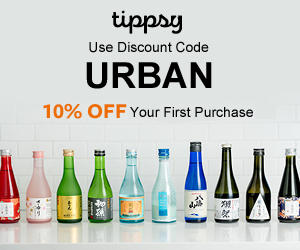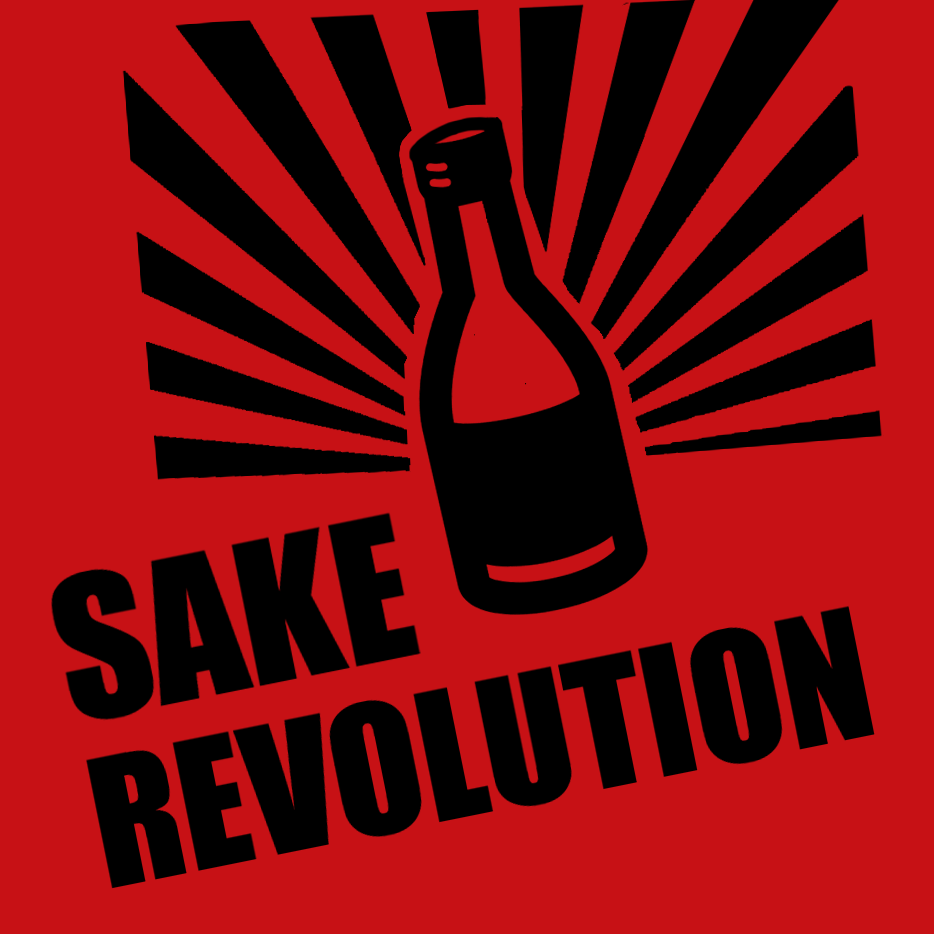Interview: Dewey Weddington at SakeOne

Dewey Weddington
Q: SakéOne is our country’s only American-owned sake brewery. What are the advantages and disadvantages in producing sake in the US?
Dewey Weddington: The disadvantages to producing saké in the US are simply that we do not have the broader industry infrastructure that is found in Japan. There is no brewer’s education system, no guild, no saké industry associations or the events and systems that support and promote saké. Additionally, the available rice varieties are limited to very few choices which somewhat limits our ability to brew the styles we dream of. But we do have a strong information support system with Momokawa Japan and their master Toji Yoshio Koizumi who is Greg Lorenz’s, our Toji, teacher and on-going guide. It would be far more difficult without their support.
The advantages, oddly enough, are also related to not having the strength of the Japanese saké industry at our disposal. We are not bound to tradition, to regional styles, to the written or unwritten rules of saké. We do not have the cultural limitations imposed on our friends in Japan. Because we are “the Americans” brewing saké we are basically free to roam where our desires take us. It’s much like Oregon’s microbreweries and wine producers who began with a historical base but a fresh vision. While we work hard to keep our hands on the traditions we are not bound by them, so we look to the future and what is good for America. We bottle Genshu, Nigori, fruit infused saké which are not so common or desired in Japan, and were saké styles we were originally advised to not create. Today every importer or producer for the US has a nigori and nine years after we first bottled our Asian Pear infused saké under the Moonstone brand, we watched as another “domestic” producer rolled out their own infused saké and a small importer unveiled a few as well. We hear that today there are several infused saké showing up in Japan. Our ability to take risks, make fast decisions and head into uncharted territory is a real plus for us.
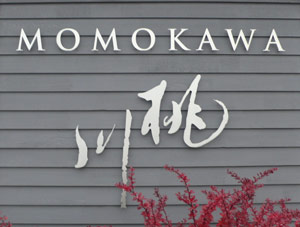 Q: What do you think are the most misunderstood ideas about sake and American-made sake specifically?
Q: What do you think are the most misunderstood ideas about sake and American-made sake specifically?
Dewey Weddington: The most misunderstood idea about saké is still the simple idea that saké is only the cheap hot stuff. People here in the states have a long way to go in learning what saké is. The reality that hot saké is here to stay is challenging our ability to educate and change perceptions but there are a lot of us working on it including yourself, Beau Timken, Chris Johnson, John Gauntner among others.
The most frustrating challenge is perception that saké brewed in the US is not, and can not be, the quality of what is brewed in Japan. This comes from what most people associate with domestic saké – cheap, doesn’t taste good and always served hot. The brewers who were here before us continue to focus on the hot saké niche but we started out as a Junmai Ginjo producer facing an uphill climb from a domestic producer standpoint. The “can’t make good saké in the states,†also comes from the growing number of saké educated people who assume if it’s not from Japan it can’t be any good. As those people meet us and taste our finest we begin breaking down this myth.
When people taste our saké they are surprised, sometimes shocked that something that tastes so good was brewed in the US by Americans. One of our team loves to do blind tastings because of the surprise found when the saké are unveiled. Our G Joy saké has gained support from the leading saké Sommeliers in the US and our enhanced Momokawa line with the new Organics is getting a lot of attention. Saké brewed in the US doesn’t have to be rough tasting hot liquid and we hope we are proving that every day in every bottle.
Q: When you travel around the US and introduce your sake, what’s the reaction been?
Dewey Weddington: The main reaction is our favorite reaction – big smiles and bright eyes followed by “oh wow” comments. That really sums it up. We pour at major trade shows and consumer events all over the US and people are surprised at three things; Saké tastes so much better than they thought, more like a fine white wine. The saké is brewed in the US and, it is brewed by Americans in Oregon. Oregon? “Isn’t that the home of Pinot Noir and Micro brewed beer?” Yes indeed it is. Oregonians have a penchant for fine beverages and for pioneering new concepts, saké is an ideal fit and it goes so well with NW cuisine.
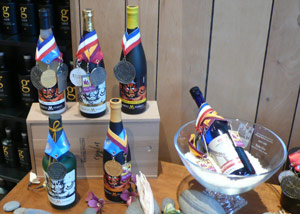
SakeOne Tasting Room
Dewey Weddington: Oh, this is a favorite topic for us as we tend to look or unconventional, unexpected pairings. Here are some of our favorites.
G Joy РTypically big, meaty flavors like rosemary lamb chops, smoked Gouda or Vermont Cheddar. But, we also find that G Joy goes well with spicy foods. A recent Press lunch had us pairing it with Roulade of lamb on a lamb demi glaze served over Oregon chanterelles and cipollini onion sak̩ agro dolce Рit was amazing. We do know a great number of people who swear G pairs incredibly with pepperoni pizza and cheese burgers, simple, everyday American cuisine.
Momokawa Organic Junmai Ginjo РThis is very food friendly sak̩ but some of our favorites include: Fig Souvlaki: dried figs filled with feta, wrapped in alderwood smoked bacon and sage. Kasuzuke Wild Sockeye Salmon with a Boysenberry Glaze: Rice lees marinade, glazed with a ginger boysenberry reduction & served with a strawberry tomatillo salsa. And two of my personal favorites were discovered with friends at the Side Door in Honolulu; sea clam poke and grilled thick cut pork chops.
Moonstone Coconut Lemongrass (Nigori) – Outstanding with spicy Thai curry dishes, lime infused dark chocolate and simply poured over vanilla ice cream.
Momokawa Pearl (Nigori) – Flourless chocolate torte or anything with dark chocolate. Fresh strawberries and spicy dishes.
Momokawa Silver РKumumoto oysters, really any oyster, mussels and clams. A great seafood sak̩.
Q: You have a USDA certified organic sake for sale which is a rarity. What can you tell us about organic sake?
Dewey Weddington: Organic saké is indeed rare and in fact the Momokawa organic saké are the only saké to carry the USDA organic seal. For us it means even more careful attention to our rice handling and brewing, more hands on and detailed management. It means that every element in our brewing process is certified non GMO, organic or otherwise approved under the USDA standards. Our first brewing efforts were incredible. The organic rice brewed differently than our other rice. It brewed more robustly and was more flavorful in the end. Our Toji, Greg, noted that the organic rice made our yeasts very happy. The result is an
astonishing fruit forward and flavorful saké.
There are some saké from Japan that tout being organic but in the US they are not certified and technically can not even say they are organic. Japanese standards and US standards are different with Japan’s being less rigorous. So, a Japanese certified kura is not recognized as such in the US.
For our customers it means a guarantee that what’s in the bottle is organic and free of chemical pesticides, fertilizers and processing aids.
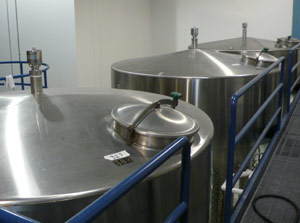 Q: The SakéOne facility in Forest Grove Oregon is impressive. Why did you pick this location? What can visitors expect when they visit you?
Q: The SakéOne facility in Forest Grove Oregon is impressive. Why did you pick this location? What can visitors expect when they visit you?
Dewey Weddington: We selected our Oregon location primarily for the water source. The Oregon coastal mountains, like most of the state, receives a great deal of rain that feeds our rivers and streams. Our water comes from a nearby reservoir which refills constantly so our water is soft with little to no iron or manganese. Its soft and flavorful. We joke that when it rains we simply look up and smile but its true, our core ingredient falls from the sky almost daily.
When people visit they can expect the unexpected. They can expect a detailed, educational tour of our kura and of course saké tasting in
the tasting room. They’ll see a kura that houses very Japanese equipment and approaches like our Satake mill and traditional koji room, as well as American equipment like our water cooled aging tanks borrowed from the local wine industry. Visitors can also expect unconventional food pairing flights, sakétini Saturday on the third Saturday of every month, concerts in the summer, saké 101 classes, sushi classes, and simply a great deal of activities with a focus on
education and tastings. We pride ourselves in a very knowledgeable staff who will change our visitors perception of saké.
Q: Tell us about your Sake Club. What is this program and what should participants expect?
Dewey Weddington: We started the first sak̩ club in the US, it is very much like wine clubs in that as a club member you get a shipment of sak̩ with pairing suggestions, technical notes, etc. every other month. In our case we have three clubs; Sak̩tini Рsix times a year with various sak̩ and mixers with recipes. Kura Рsix times a year focused on what we brew in Oregon and some select imports. Toji Рwhich also ships six times a year and includes specialty, small batch sak̩ from our kura and imports. The small batch sak̩ are typically grand experiments that we approve for club use. They have included nama zume, select genshu and other unique blends or processes. Fees for club memberships vary by the club but all members get discounts on their regular purchases, complimentary tastings and discounted or eliminated event fees.
Q: I feel that sake quality across the board is increasing year over year. What does the future hold for SakéOne?
Dewey Weddington: That’s the great news about saké today. There are more styles imported and produced here, more access and overall more quality. Its been a long 15 yeas of work but we are thrilled to see where we all are and where it looks to be heading.
Our future includes constant evolution of our core saké with diversified yeasts, rices and process. You’ll see new infused saké and some wild experiments. But, you’ll also see us evolve into the more classic styles such as Daiginjo and Tokubetsu Junmai. We dream that one day the US regulators will allow us to do a honjozo but that is far off for now.
We have no plans to sit back and relax any time soon. There is too much we want to brew, too much education to be done, and too much to do in promoting saké as a whole.
************
Thanks Dewey! It’s great to get your take on sake and learn more about SakéOne. …and I can’t wait to try some of those pairings!
SakéOne
820 Elm Street, Forest Grove, OR 97116
Tel: 503-357-7056
Fax: 503-357-1014
http://www.sakeone.com

